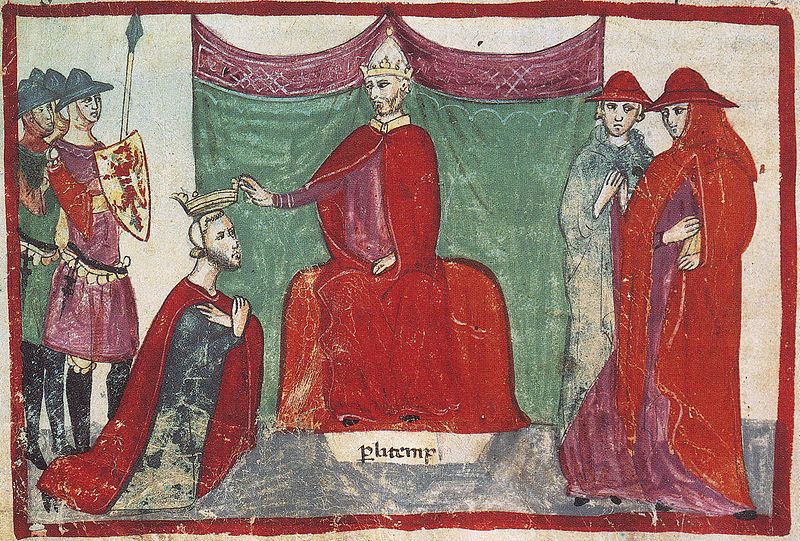




Robert Guiscard is claimed by Pope Nicholas II as a Duke (Illustration of the Nuova Cronica des Giovanni Villani)
In this period the royal palace (Castel Terracena) and the magnificent cathedral were built and science boosted as the Salerno Medical School, considered the most ancient medical institution of Western Europe, reached its maximum splendour.

Castel Terracena

Cathedral of San Matteo
With the Hohenstaufen dynasty (Swabians), at the end of the 12th century, there was a period of economic revival in the city. Following the advice of Giovanni da Procida (a famous citizen of that time), King Manfred of Sicily, Emperor Frederick II’s son, ordered the construction of a dock that still today bears his name. Moreover he founded Saint Matthew’s Fair, which was the most important market fair in Southern Italy.

After the Angevin conquest and from the 14th century onwards, most of the Salerno province became the territory of the Princes of Sanseverino, powerful feudal lords, who acted as real owners of the Region, and accumulated an enormous political and administrative power, attracting artists and men of letters. The House of Sanseverino (or San Severino) was an Italian noble family very prominent in the Kingdom of Naples. The family owned 300 fiefs, 40 counties, nine marquessates, twelve duchies and ten principalities, primarily located in Calabria, Campania, Basilicata, and Apulia. From this family emerged cardinals, viceroys, marshals and condottieri.
.jpg)
In the first decades of the 16th century the last descendant of the Sanseverino princes was in conflict with the Spanish Government, causing the ruin of the whole family and the beginning of a long period of decadence for the city.
The years 1656, 1688 and 1694 represent sorrowful dates for Salerno: the plague and the earthquake which caused many victims. A slow renewal of the city occurred in the 18th century with the end of the Spanish empire and the construction of many refined houses and churches characterising the main streets of the historical centre.
In 1799 Salerno was incorporated into the Parthenopean Republic; during the Napoleonic period, Joachim Murat decreed the closing of the Salerno Medical School, that had been declining for decades to the level of a theoretical school.
